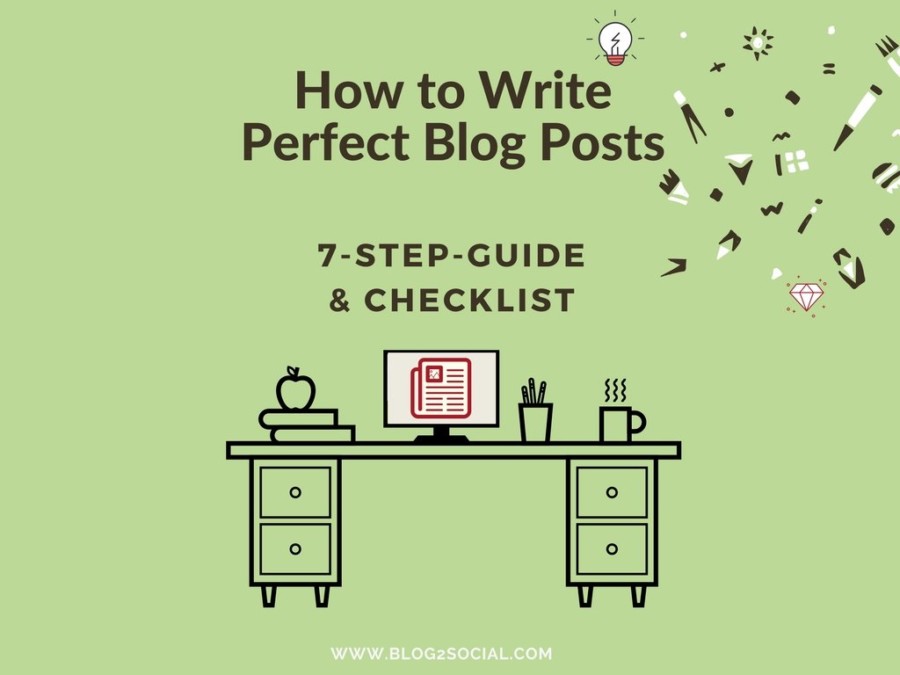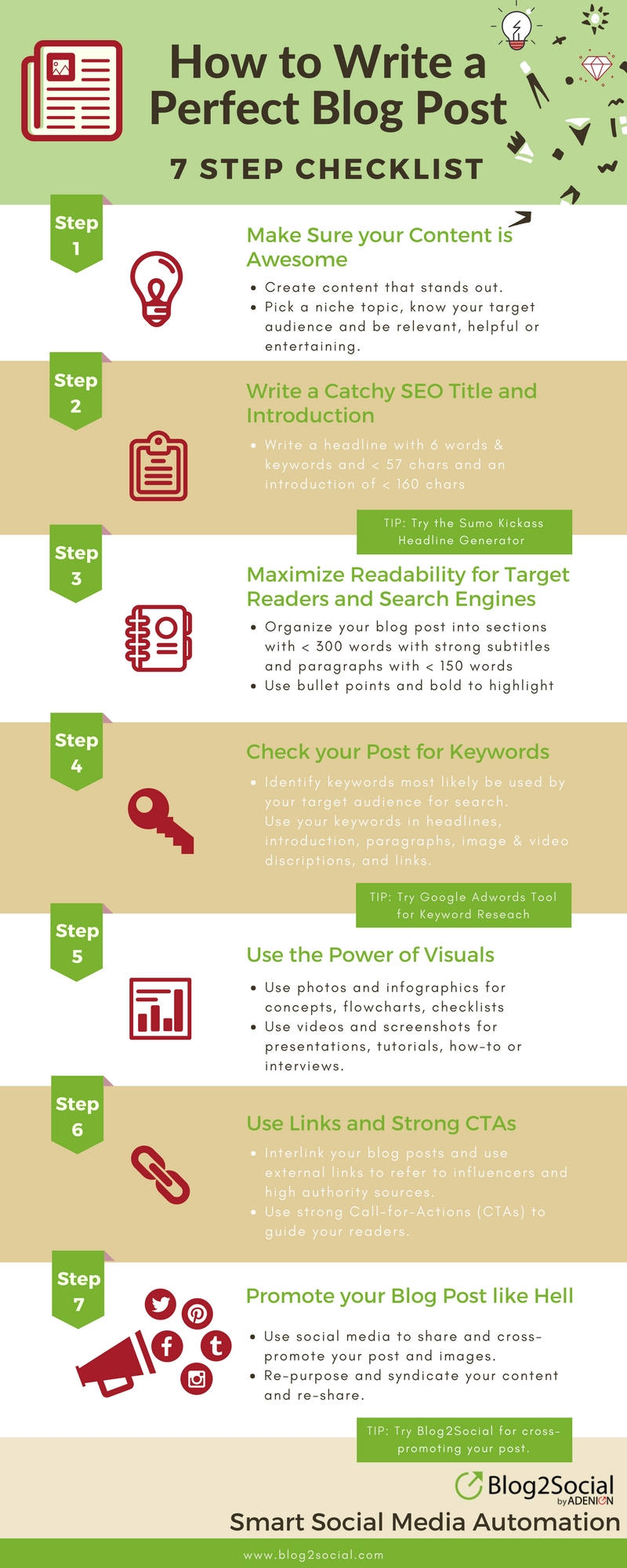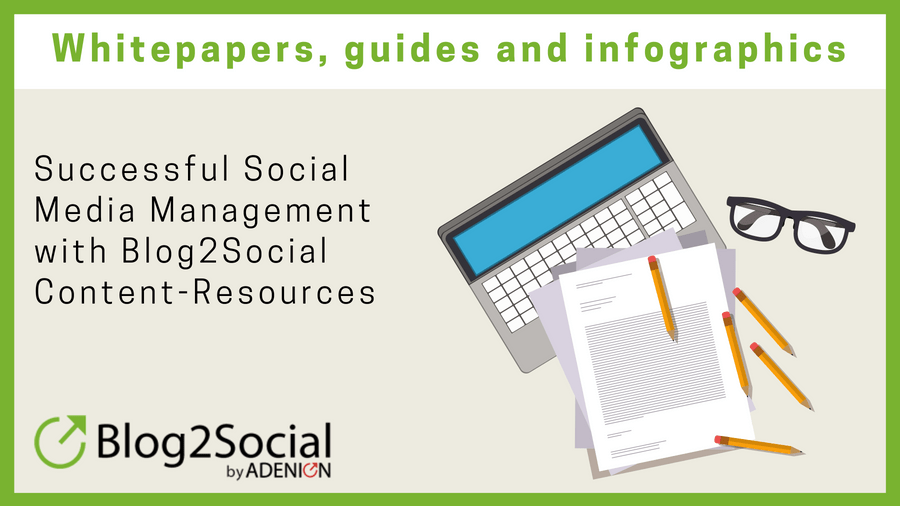Writing perfect blog posts means more than simply turning ideas into text. In the ever-growing blogosphere, creating outstanding blog content has become most challenging. This 7-step-guide and checklist will help you to make sure, your blog post gets the attention of your target readers.
Content is still king. Considering that millions of blog posts are published every day, your target readers get millions of options to choose from. So, you have to make your content stands out among the masses. In the age of the social web and content marketing, commercial content produced by corporate blogs and bloggers is competing with traditional journalistic content. There is hardly a topic not yet covered. Mark Schaefer prepares us for The Content Marketing Shock:
What does this mean for bloggers? Is there still a chance to get to the top of an ever-growing blogosphere? Yes, there is. However, it also means you will have a lot more things to consider before and after hitting the publish button.
This article will help you with a 7-step-guide and a checklist to take away to make sure you create valuable blog posts for your target audience, to optimize your posts for better readability and search engine indexing, and to maximize your promotional efforts for more outreach and performance.
![7 Steps to Writing Perfect Blog Posts [Checklist]](https://www.blog2social.com/en/blog/wp-content/uploads/2017/09/checklist-the-perfect-blog-post_header-icegram-600x194.png)
Download the Checklist 7 Steps to Writing Perfect Blog Posts
7 Steps for Writing Perfect Blog Posts
Step 1: Make sure your blog post content is awesome
- Focusing on a very specific topic or niche will help you adapt your approach as well as your wording to be more relevant for the specific audience.
- Make sure that you research thoroughly about the subject you are writing so that your work may be relevant and up-to-date.
- Research what others have written on your topic and comment or pick up a specific aspect that has not been covered. By doing this, you will find many more ideas for your future posts.
- Create awesome content, that will make your readers remember you as a point of interest and a useful resource for valuable information on your topic.
- Provide tips, strategies, how to articles or entertaining content for your specific audience and topic. Adding value for the readers will make your posts memorable.
For more guidance on managing content marketing without overwhelming your audience, also read “Epic Content Marketing,” by Joe Pulizzi.
Step 2: Write a catchy headline and introduction for your blog post
- Write a title with less than 57 characters and include your keywords. This makes sure your title is properly displayed and gets not truncated in the search engines.
- Make sure the first 160 characters of your introduction cover the essence of what your post is about and also include your focus keywords so that it can double act as meta description and snippet for your post.
- Try the Sumo Kickass Headline Generator to create engaging headlines and titles for your blog post.
- Check the Portent Content Idea Generator to find catchy titles (don’t take it too serious – but it’s fun)
- Take a look Buzzfeed for trending buzz and buzzy headlines
Step 3: Maximize readability for readers and search engines
To maximize readablility for your perfect blog post
- Be as short as possible and as long as necessary.
- Keep your sentences short and easy to understand.
- Segment your blog post into paragraphs with strong subheadings.
- Organize your blog post in paragraphs with less than 150 words and
- Structure your post in sections with less than 300 words.
- Use subheadings for each section focussing on a single aspect of your topic.
- Listings, italics and bold help to outline and highlight important aspects and keywords.
- Include at least 1 internal link to refer to related content in your past posts.
- Include at least 1 external links for quotes or high authority sources referencing on your topic.
- Write in a language and wording that meets the tonality and language usage of your target audience.
- Proofread for spelling errors and grammar.
Tools to use:
- Try the Hemmingway App to streamline your text into a copy that is easy to read.
- Grammarly is your indispensable helper to check your text for spelling, errors and grammar mistakes.
- Yoast SEO helps you to check your text structure for readability and search.
Step 4: Check your blog posts for keywords
- Use your focus keyword and synonymous keywords according to search volume and place them appropriately into your blog post.
- Most importantly, include your focus keyword in your headline and introduction as well as in subheadings and copy, evenly distributed throughout the text.
- Use your focus keyword also in image descriptions and in video titles and descriptions.
- Apply your keywords in your anchor texts for internal links.
- Note: Only use relevant context to place your keywords.
- Don’t overstuff your text, keep a keyword density of 1-3%.
- Use synonyms to get more variation and always keep your text flow consistently. You are still writing for humans, not for engines.
Tools to use:
- Google Keyword Planner helps you to check your keywords for search relevancy and find alternative keywords and phrases.
- Keywordtool.io helps you to find relevant keywords, keyword phrases, and long tail keywords.
- Thesaurus helps you to find synonyms for your keywords
Step 5: Use the power of images and videos to visualize your content
- You can visualize tutorials or technical instructions by using screenshots or screencast videos.
- Use infographics for creating checklists, pros & cons, step-by-step-guides, flow charts or even for telling stories.
Step 6: Use links and strong CTAs for your blog posts
- Use sticky content and takeaways to make your readers subscribe to your blog or leave their e-mail address to follow-up.
- Encourage your readers to read on or comment on your post or to grab a white paper, a checklist or an e-book by using strong call-to-actions (CTAs).
Step 7: Promote your blog posts like hell and repurpose your content
- Share your post on Twitter, Facebook, Google+ and LinkedIn.
- If you have business pages on Facebook, LinkedIn, and Google+, share your posts to your pages as well but at different times and days.
- Also, share your blog post to relevant groups and communities on Facebook, LinkedIn, and Google+, but share them on different days and times and use different messages tailored for each group.
- Schedule your post multiple times on Twitter.
- Share your blog post images on Pinterest, Instagram, and Flickr, using your focus image with your introduction, hashtags and a link to your post.
- If you use multiple images, share them all, but share them on different days and at different times.
- You can also share your images on Twitter, Facebook, LinkedIn and Google+ to re-share your posts with different visual anchors.
- Share your blog post in special interest communities such as Reddit.
- Also share a link to your blog post to social bookmark networks such as Diigo, Digg, StumbleUpon.
- Schedule your posts at the best times for each network and across several days, weeks and month to extend the lifespan of your posts.
Re-purpose your content:
- Re-share and re-schedule your evergreen posts from time to time to revive them.
- Syndicate and re-publish your post on Medium, Tumblr, Linkedin Pulse, Bloglovin, but wait for 3-7 days to let Google index your original blog post first.
- Turn your images and content into a slideshow or video to share on Slideshare and Youtube.
- Turn longer post into a white paper, checklist or e-book as a takeaway for your blog and for re-sharing your content.
- Reach out to influencers to present your post or link to in and to your post. Like, share and comment on their posts to get attention, response, and backlinks to your post.
Wrap up
There are several things you can do to turn your blog posts into great content that stands out among millions of other reading options for your target audience. Writing about a very specific topic for a very specific audience by using the right keywords is one thing. Optimizing your post for the human reader by considering some basic SEO criteria will make sure your content gets better indexed for searches by your target audience. Promoting and seeding your blog post on multiple social media and influencer outlets will help you to maximize outreach and performance. Download your 7-step-checklist to make sure, you think of everything you can do to write perfect blog posts.
![7 Steps to Writing Perfect Blog Posts [Checklist]](https://www.blog2social.com/en/blog/wp-content/uploads/2017/09/checklist-the-perfect-blog-post_header-icegram-600x194.png)
Download the Checklist 7 Steps to Writing Perfect Blog Posts

Melanie Tamblé is co-founder and co-CEO of Adenion GmbH. She is an experienced expert in content marketing and social media.
Adenion GmbH specializes in online services and tools for bloggers, businesses and agencies of any size to support their online marketing and content seeding tasks on the web.
Blog2Social as WordPress Plugin and WebApp enable fast and easy auto-posting, scheduling and cross-promotion of blog posts, articles, links, images, videos and documents across multiple social media sites.
Social media posts will be automatically turned into a customized format for each social platform and auto-scheduled for the best time. Social media post can be previewed and tailored with individual post formats, images or personal comments – all in one easy step.


















I found your 7 Step Checklist quite thorough and very well written. As a newbie in affiliate marketing, this post, which I have downloaded, is going to be very beneficial to me.
Hello Vasudiwan,
thank you for your feedback. We are happy to hear that this post was beneficial to you.
Good luck with your affiliate projects.
Best regards,
Vera from your Blog2Social Team
What a relief that i’ve found your post. I’m wondering about how to make my blog better, because its not good enough as for my thoughts. Steps 2 and 3 i knew before, but realised thats a few. As for 1 Step i usually ask for help https://pro-papers.com and they really help me, because imagination sometimes doesnt want to work. Steps 4 and 5 are veery useful – they reaaly will help me to increase interesting fact. THANK YOU!)
Hello Clark,
thank you for your comment and your suggestion. I am sure you could write great posts yourself, just think about topics you might find interesting or that can help your readers.
From my experience relying on someone else to write your content might not be entirely successful. After all, you know best who your target audience is and which keywords you’d like to focus on. Check out our Ultimate Guide: How to Write, Optimize and Promote Blog Posts, and I am sure you will feel much better about your next self-written blog post already!
Best regards,
Vera
from your Blog2Social Team.
Your post is very interesting. Thank you for sharing.
Hi Sara, thank you so much for your kind words. Great to hear that you find my article helpful.
Hi Melanie, you’ve created a great checklist! I myself have created a checklist for my every blog. This definitely saves time & not worry about if I’m missing something. But, now after reading your post, I think I’m missing some points. Will surely put your strategies in action for my next post. Thanks!
Hey Kelsey,
Thank you for your great feedback! We’re glad to hear that you were able to add a couple of points to your own checklist. Checklists are always a great way to keep track of important things you don’t want to miss. Feel free to share if you have anything to add as well and let us know how the strategies worked for your blog posts.
Best regards,
Sabrina
Blog2Social-Team